We did it because we could. The ice is gone, the tide was high. My son and I dipped the canoe in the ocean and paddled out to a nearby island. He hiked around it and then we paddled back again.
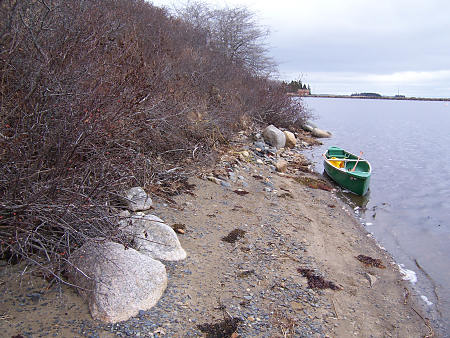

Life in Nova Scotia
We did it because we could. The ice is gone, the tide was high. My son and I dipped the canoe in the ocean and paddled out to a nearby island. He hiked around it and then we paddled back again.

J.D. Irving Ltd. is selling off vast holdings of land in southwestern Nova Scotia that it has been logging. “Professional forestry management” is what they’ve been doing there, and apparently it’s not worthwhile for them to continue.

“Buy Back Nova Scotia” is a group that aims to save the 170,000 acres of land that’s up for sale and prevent them from falling into private hands and being hidden behind No Trespassing signs. Here’s the map (right) showing the lands concerned.
Below, there’s a Google Map of the area south of Digby and the Bear River Reserve. See the long, straight, engineered logging roads built for the sole purpose of getting the logs out, as well as the clearcuts. Use the + button to zoom in further, and you will get to more detailed aerial photos showing the effects of logging.
On the Buy Back Nova Scotia site you can get more information, sign a petition, and mroe. And here’s the link to the property listing with an American company – aimed, obviously, at foreign buyers.
View Larger Map
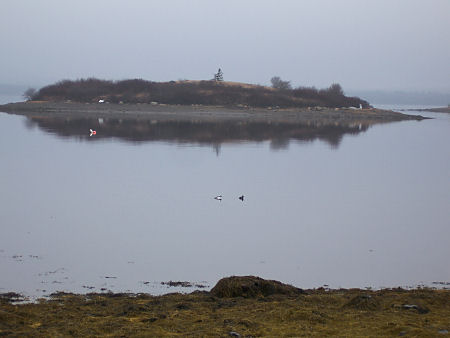
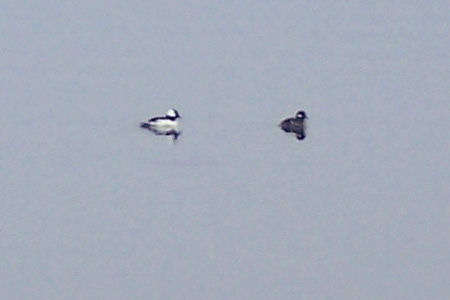
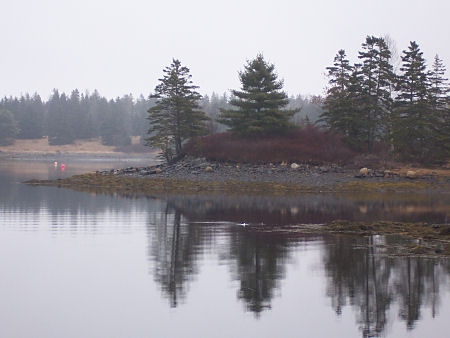





A fun new site about hiking in Nova Scotia has just been launched by Don Crowell of Kentville. He has videos, screensavers, high-resolution photos you can download and print, contests, a blog describing his adventures, etc. Like me, he obviously loves living in Nova Scotia and getting close to nature, and he’s done a good job with his website. Check it out.
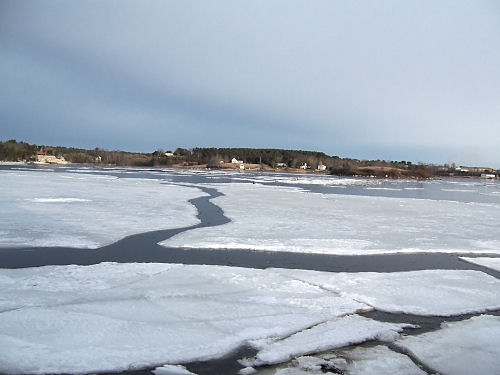
The powerful north winds of the storm earlier in the week pinned the ice to the shore, even while driving cracks into it. Now there is no wind, and much of the ice that we walked on in January seems poised to float out to sea. What will it take for it to leave? A south wind? Repeated tides?
The sea ice nearby is keeping the temperature down in our yard. Much of it is still covered with snow and ice, while up the road, further away from the water, the ground is bare. It has been a hard, icy winter. So I’ll be glad to see the sea ice go.
Spring is coming – we know it from watching the ice disappear. Martins River down the road is completely clear now, but outside our sheltered inlet there is a large, solid sheet of ice that goes up and down with the tide but hasn’t yet broken up, except around the edges. When it does, the tide will carry it away. It’s preventing the ice pans in our inlet from leaving for the open sea. So they’re melting, and leaving a large open space of water.


A friend has been feeding ducks in his backyard in the town of Mahone Bay.

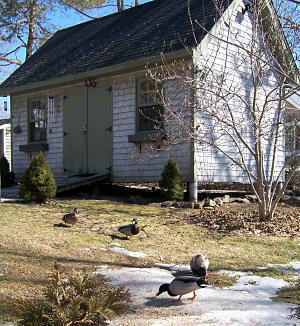


I stood and watched the tide start to go out, leaving traces in the snow to mark how high it had been, ice crystals transformed by the brief caress of the ocean.